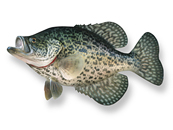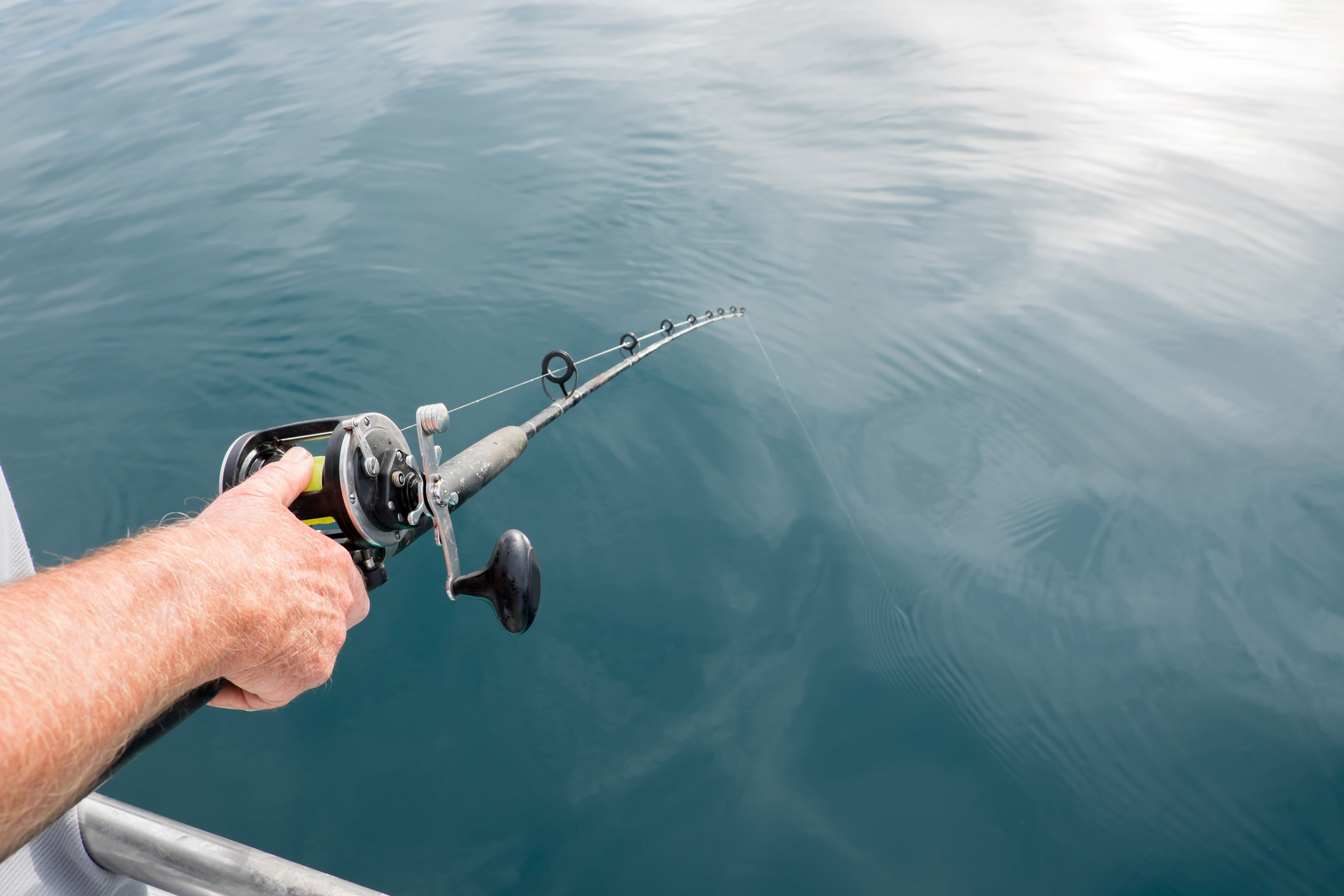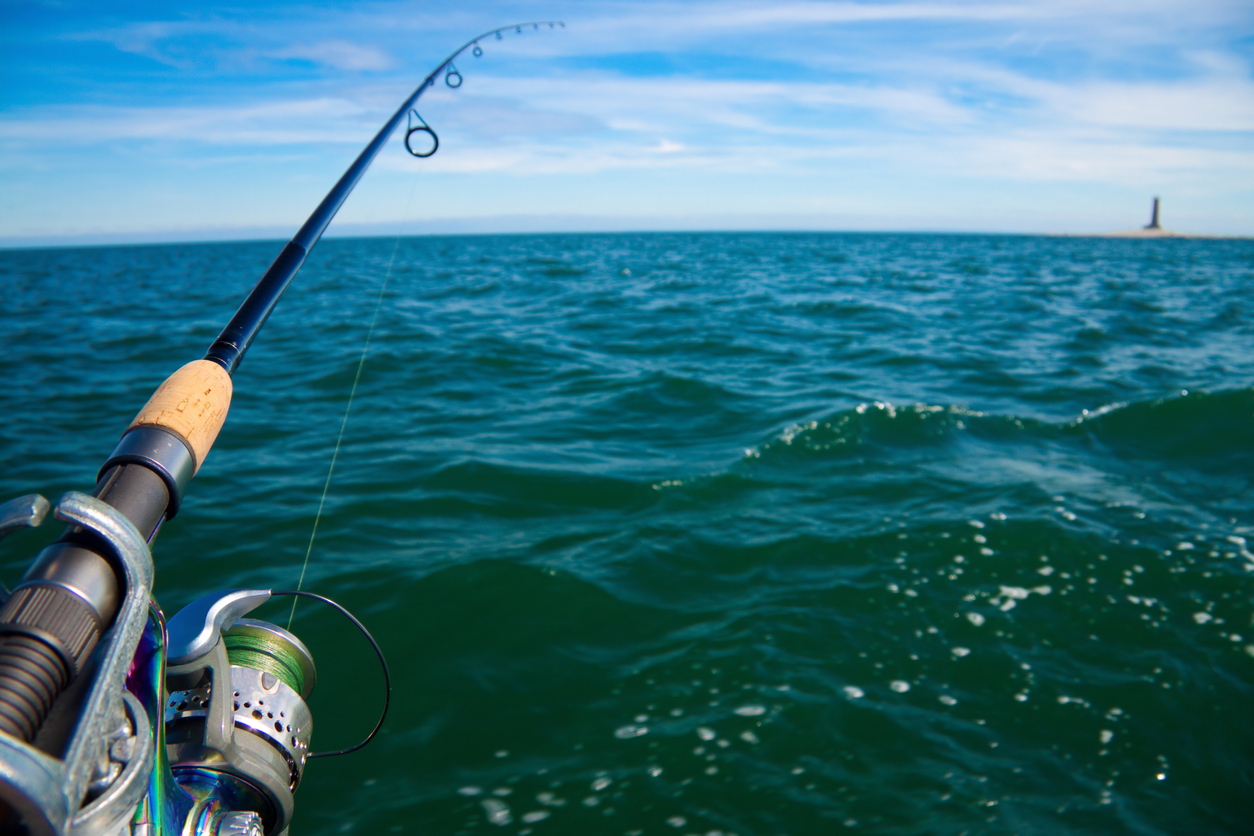Black Crappie
Pomoxis nigromaculatus
AKA: calico bass
Along with the black crappie, the white crappie is the third most preferred group of freshwater sportfish, ranking behind only bass and catfish.
-
Distinguishing Markings:
Crappies’ gill covers have spines. The black crappie can be easily confused with the white crappie. However, it is deeper bodied than the white crappie, a silvery-green in color. There are no distinct vertical bars; rather there are irregular black blotches. The dorsal fin has seven or eight spines. Males do not develop specialized breeding coloration during spawning season.
-
Size:
Crappie range in size up to about two pounds or less.
-
Distribution:
The native range of the black crappie was very similar to that of the white crappie, except that it extended slightly further north into Canada and east to the coastal plain south of Virginia. Currently, populations of black crappie can be found in each of the 48 contiguous United States.
-
Habitat:
Crappie tend to swim around sheltered areas in freshwater lakes, seeking protection from enemies and access to prevalent food source.
-
Food:
Crappie eat smaller fish such as shad. Black crappie adults feed on fewer fish, and more insects and crustaceans, than do white crappie.
-
Spawning:
Crappie spawn in areas with brush and stumps in the water, in the springtime when the water temperatures get warmer. Like other members of the sunfish family, black crappie are nest builders. They nest in the spring, generally when water temperatures reach 60 degrees F. The biology of black crappie is very similar to that of white crappie. Growth in terms of weight is very similar between the two species. White crappie tend to have higher growth rates in terms of length, but black crappie are more robust in body construction.
-
Fishing Tips:
Although crappie are warm water fish, they are unique in that they can be caught quite often in the cooler months, most frequently in November and March. Fish for crappie by using a float since crappie do not always stay near the bottom. Crappie are attracted to a wealth of bait and artificial lures including small jigs, hair jigs, minnows, shiners and worms. Fish for crappie collecting around thick vegetation and other structure such as stumps, brush and logs.


